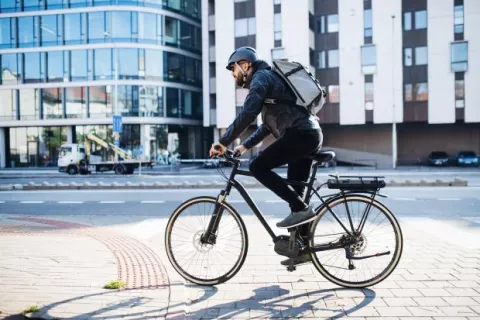
As we move through this 'transition phase', out of the peak of the COVID-19 pandemic, our cities are being stress-tested on a number of fronts.
Transport is one such area, as we found out when sitting down with Alana Newbrook of WSP.
Alana joined us as part of our series of reflections feeding into our work at the Bounce Lab.
In this discussion Alana refers to a report recently published by WSP providing a framework for assessing the capacity of public transport under different recovery scenarios. Here were the eight key findings:
- The highest priority for public transport during Stage 2 - Transition will be to maintain the safety of drivers, the frontline workforce and passengers. Measures such as the removal of cash fares, rear-door boarding, use of Personal Protective Equipment (PPE) and increased cleaning will continue to play an important role for some time.
- COVID-19 will have changed many people’s attitudes towards using public transport and their associated behaviours. Understanding how, where, when and why people will want to travel in future will be fundamental in planning for an effective economic recovery, to both encourage people back to public transport and support the ongoing development of the future transport system to deliver successful city objectives.
- Three transition scenarios with varying degrees of distancing were assessed. They may require public transport to operate at most between 30% and 50% of total capacity, with specific issues for different modes.
- In busy metropolitan areas which currently operate with standing room only at peak times, both demand and supply side measures will be needed during Stage 2 – Transition. This could include: staged return of the workforce (e.g. A, B and C teams), peak spreading, promoting a shift to active transport supported by additional infrastructure and a targeted increase in public transport services.
- Operational considerations are important for passenger behaviour at stops, stations and on vehicles and promoting compliance. Changes to boarding and alighting locations, one-way flows, floor markings and additional operational staff may be required. Timetabling may need to be adjusted to account for longer passenger loading and unloading times.
- Stage 2 – Transition approaches will need to be adaptable and flexible, to respond rapidly as travel patterns and public health advice changes, based on up-to-date travel and health data.
- There are many unknowns and questions over how COVID19 will impact the wider future of our transport systems. The huge changes seen in recent months offer an opportunity to re-evaluate and re-prioritise. Congestion and emissions have reduced, people have more time with their families and are engaging more with their local places and communities. There is great potential to lock in these benefits, so some good comes from the challenging situations which COVID-19 has created.
- It is critical that people feel safe returning to public transport, so that it remains at the heart of transport systems that create successful cities and thriving places.
The full paper can be dowloaded here.



